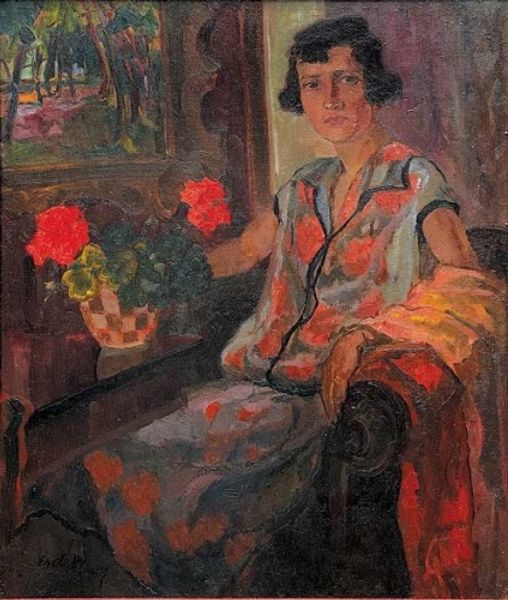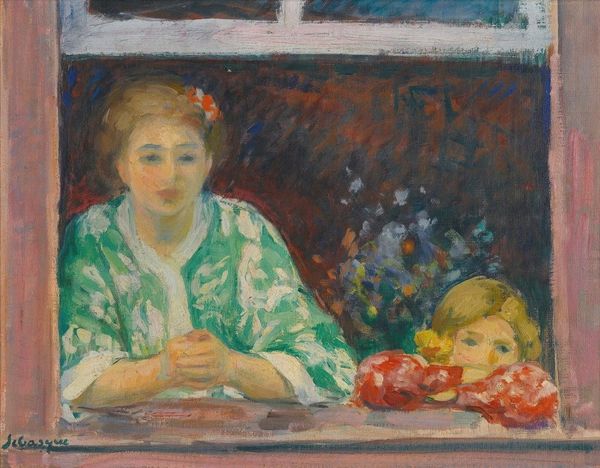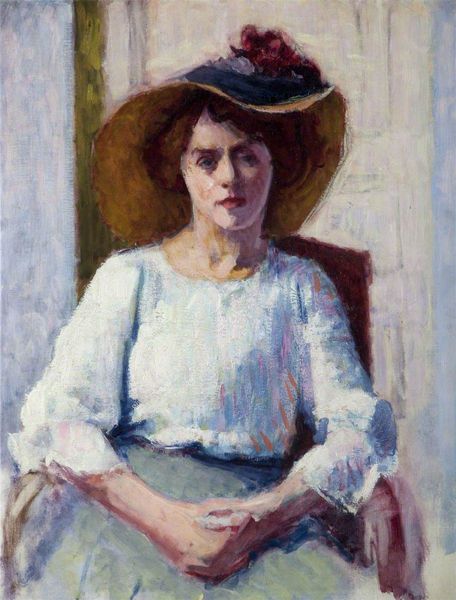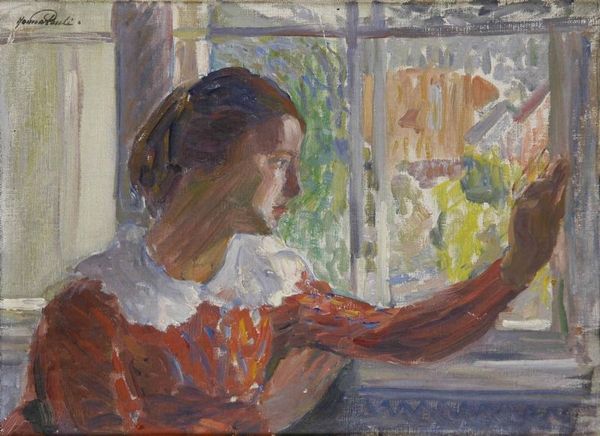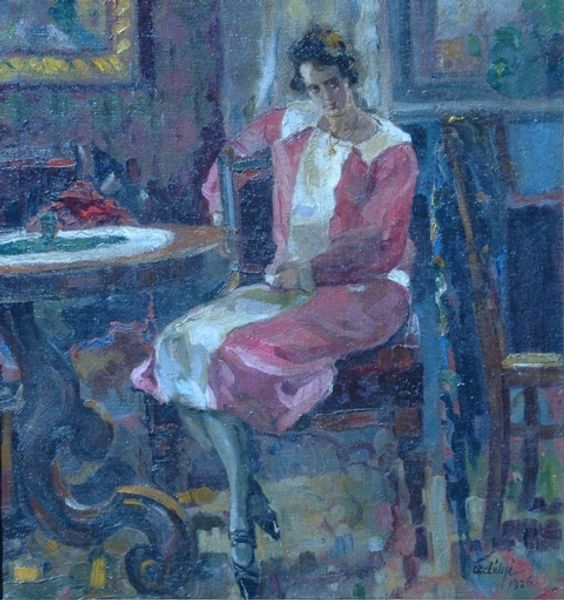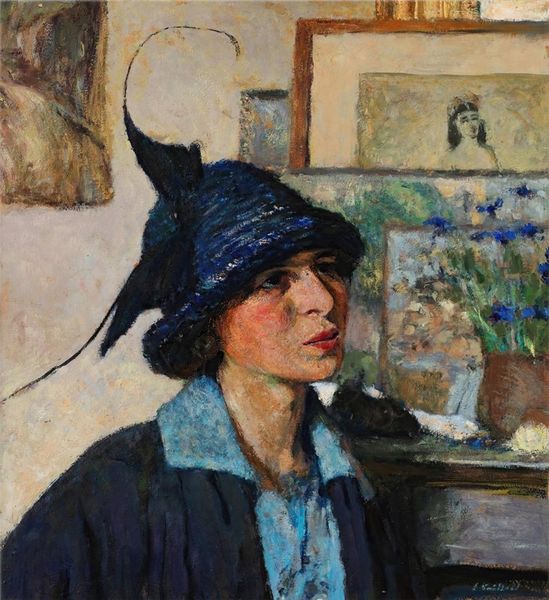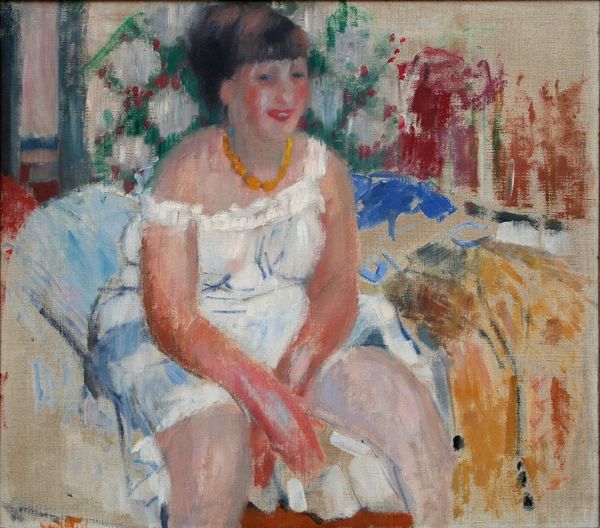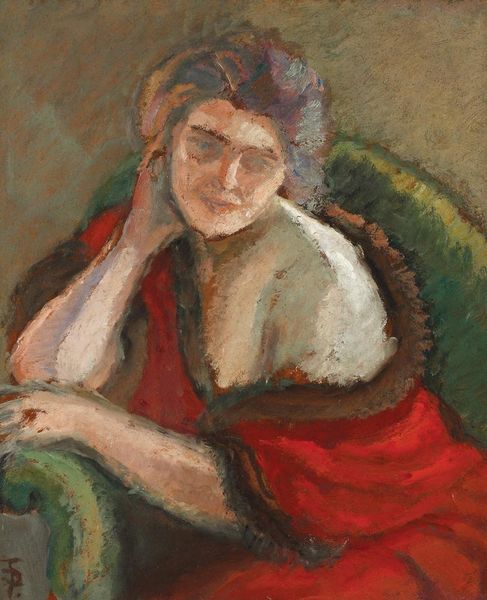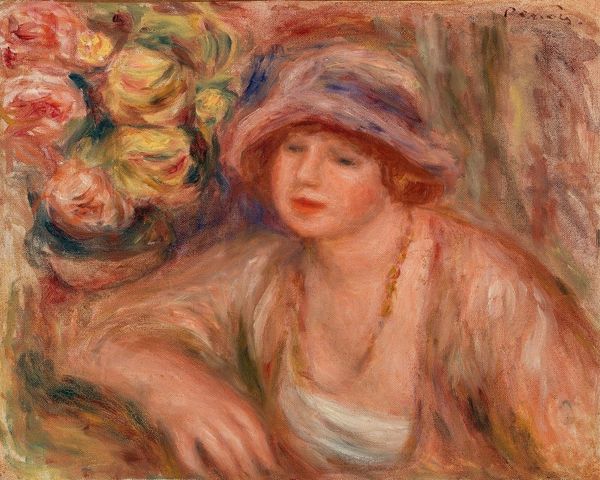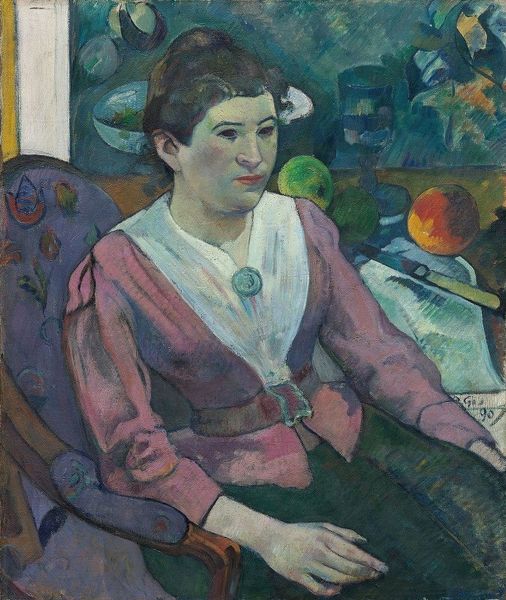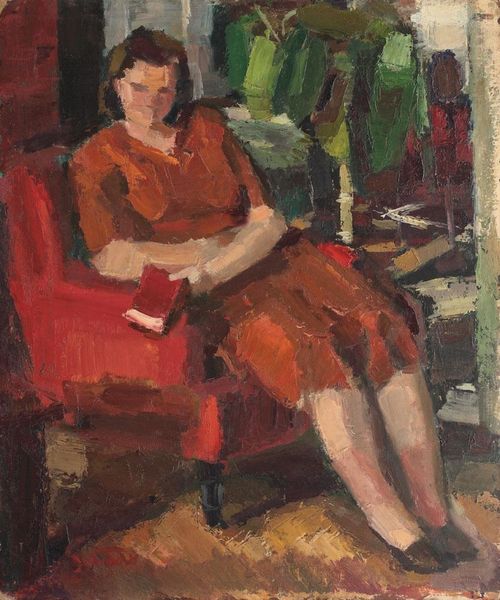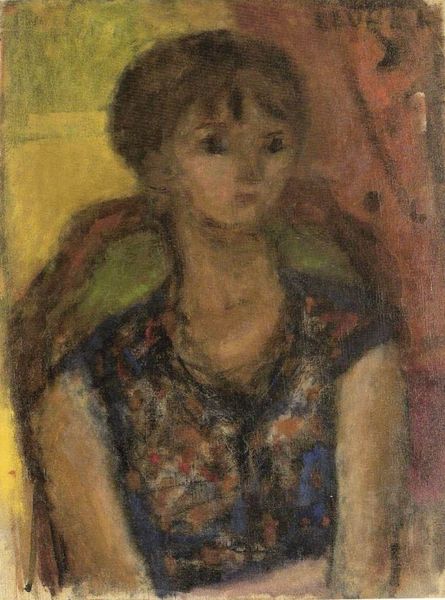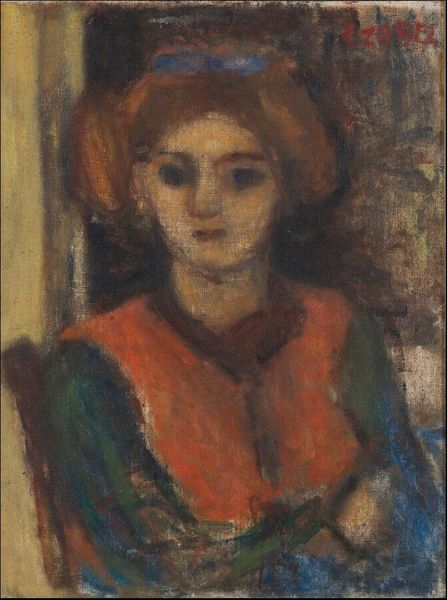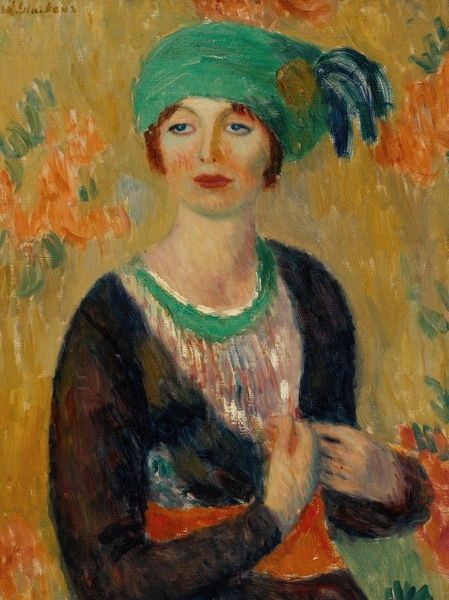
oil-paint
#
portrait
#
oil-paint
#
oil painting
#
intimism
#
genre-painting
#
modernism
Copyright: Public domain US
Editor: This is Francisc Sirato’s “Young Woman in Interior,” an oil painting from 1923. I find it quite intimate; the woman's gaze seems both direct and vulnerable. What can you tell me about it? Curator: It’s interesting you use the word "intimate." The Intimist movement, very much en vogue at the time, explored bourgeois interior life. This painting invites us to consider the constraints placed on women and how those confines shape identity. Notice how the domestic setting, while perhaps comfortable, also acts as a stage, a limited space. Editor: That's a good point, it is quite literally "painterly". How might her gaze play into that dynamic? Is she aware of her position? Curator: Precisely! Think about the history of the female gaze, which traditionally centered men, and then consider this artwork. What does it mean for her to look directly at the viewer during an era when women fought for more freedom and expression? Is her expression one of passive acceptance, or does it have something of active defiance? The gaze becomes a powerful form of agency, subverting the conventional relationship between artist, subject, and viewer. Editor: So, you’re saying the apparent passivity may be a sort of performance of the roles she’s expected to fill, even in this private, interior space? Curator: It is. Her presence demands a re-evaluation of domesticity, womanhood and female power. Do you think that our contemporary theory influences the perception of her self-awareness? Editor: It completely changes the way I perceive the work now. It really enriches my understanding. Curator: Indeed, it encourages us to consider how historical and cultural contexts affect our engagement with art, which ultimately reveals so much about society.
Comments
No comments
Be the first to comment and join the conversation on the ultimate creative platform.
